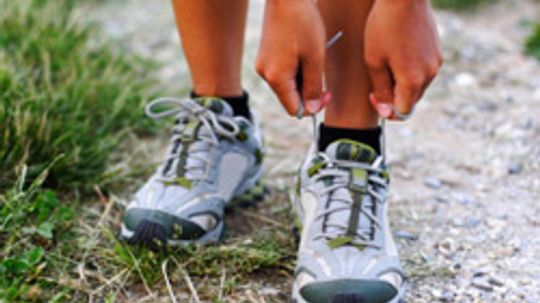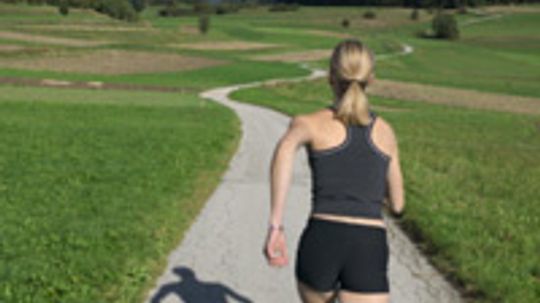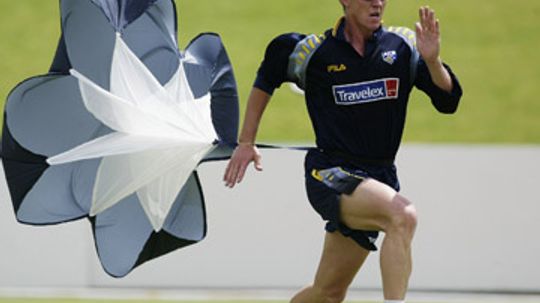Running Training
Running training takes practice and dedication. Running training plans are usually fairly strict but they are great for preparing for races. Check out the great running training guides in this section.
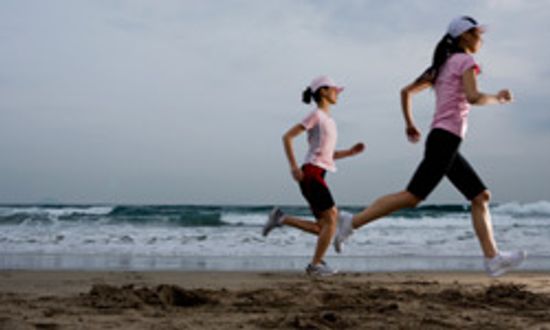
Top 10 Training Tips for a 5k
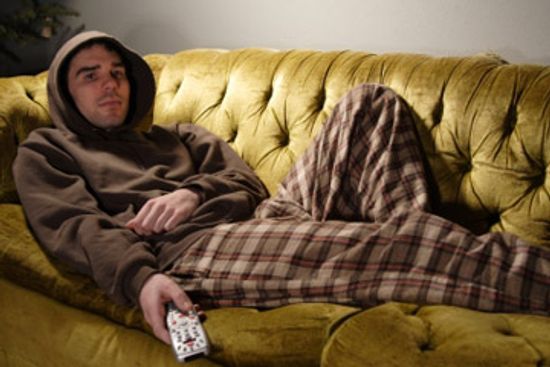
Couch to 5K Plan: A Beginner's Guide to Running Success

How Advanced 5K Training Works

How Advanced 10K Training Works

How to Train for Your First Marathon

What's happening when you get a second wind?

Is it possible to run a marathon backward?

How Barefoot Running Shoes Work

10 Tips for Maintaining Your Motivation to Run

5 Tips for Motivation to Start Running

How Hitting the Wall Works

How Bungee Speed Training Works

How Circuit Training Works

How Interval Training Works

Does strength training help your heart and lungs?

How Ab Workouts for Runners Work

How Core Strength Training for Runners Works
Learn More
You're running or biking, but you're quickly running out of steam. Then suddenly - BAM - you get a rush of energy. What's going on?
By Maria Trimarchi
Long-distance running is inherently challenging and requires strength and endurance. Try running a 26.2-mile race backward, and you've added even more challenges to the feat!
By Laurie L. Dove
Barefoot running continues to be debated among runners, but what if you want just a little protection for your tootsies? Scope out your options and find out about barefoot running shoes.
By Nathan Chandler & Craig Haggit
Advertisement
So, you're thinking about running a 5K race. If you've never run one before, those 5 kilometers might seem incredibly daunting. But countless others have done it before, and just a little bit of advice can help you get off of the couch and through the finish line.
By Meghan E. Smith
We've all read about the positive health benefits of running. But despite articles, statistics and a pair of shoes right by the door, it's hard for some people to get going. There are a few tricks dedicated runners keep up their sleeves in order to stay focused, and they might work for you, too.
By Michael Franco
Even though we know running is a healthy activity, it's still easy to resist. Luckily, seasoned runners have a bunch of tools for maintaining the inspiration to run.
By Nathan Chandler & Sara Novak
Proper running form not only helps you comfortably boost your speed and endurance -- it also helps you prevent injuries. What does bad form look like, and how you can avoid it?
By Lance Looper
Advertisement
Gone are the days that strength training was only for bodybuilding. Buff, macho men "maxing out" on free weights have been replaced with health nuts lifting weights to stay fit. But does strength training actually help your heart and lungs?
By Sara Novak
Running exercises more than just your legs. If your stomach muscles aren't in shape, you won't be able to set your best pace. What kinds of exercises will help you strengthen those abs?
By Nathan Chandler
You've mastered the 10K, now you're ready to compete. But running to complete the race is different from running to win it. How do you change your training habits to help you compete?
By Josh Briggs
Out of fear, need for food or fun, humans have been loping long distances since the beginning of time. But we still need to train for a 5K. How's it done?
By Nicholas Gerbis
Advertisement
The same material that boings bungee jumpers from bridges is used by runners to increase muscle strength. How will this type of resistance training improve your running performance?
By Debra Ronca
If you easily get bored with workouts, the variety involved in circuit training may appeal to you. What exercises are used in circuit training to spice up the routine?
By Victoria Vogt
Late-night infomercials advertising ab-strengthening rockers, loungers and workout DVDs insist that all you need are six-pack abs. But core strength training for runners goes beyond sculpting a washboard stomach. What can a strong core do for you?
By Victoria Vogt
First-time and even experienced marathon runners know it all too well: the feeling that hits around mile 20 when your legs begin to give way and you feel as if you would die if you moved another step. What's going on here, and what can you do to avoid it?
By Kevin P. Allen
Advertisement
If you run 15 to 40 miles per week, you're an intermediate runner. If you'd like to increase your speed for your next 5K, how should you train?
By Meredith Bower
Interval training mixes up high- and low-intensity exercises to help boost stamina. How is alternating speeds better for your body than working out at a continuous pace?
By Thorin Klosowski
Crossing your lactate threshold during a race can cause you to feel exhausted and decrease your pace. So how do you increase your lactate threshold in training?
By Melissa Sandoval
If you're a runner, that doesn't mean you get out of exercising your legs -- strong leg muscles are especially important for runners. How do leg workouts help improve strength and stamina?
By John Kelly
Advertisement
Runners normally train by, well, running. You need strong legs and lungs to run well, but what about your back, chest and abs? Pilates strengthens those areas and improves endurance as well. Just one workout a week will make a huge difference.
By Ed Grabianowski
If you're looking for an extra edge in your sport, plyometrics may be the answer. But what, exactly, is it and how do you do it?
By Brian Boone
Bagging a workout usually implies that you've avoided or ended an exercise session prematurely. But that's not the case with a Powerbag which makes your typical training even more difficult.
By Victoria Vogt
Running is often a lonely sport, but it doesn't have to be. How do you find the right group of fitness-minded people to make the miles fly by?
By Thorin Klosowski
Advertisement
Whether your goal is to beat your personal best in a local road race or compete with the elites in Boston, running ladders can help you succeed. So what is this strange-sounding workout, and what exactly will it do for you?
By Jeff Harder
You don't have to tumble out of an airplane to make good use of a parachute. Running parachutes are gaining popularity with a host of athletes.
By Sara Novak




